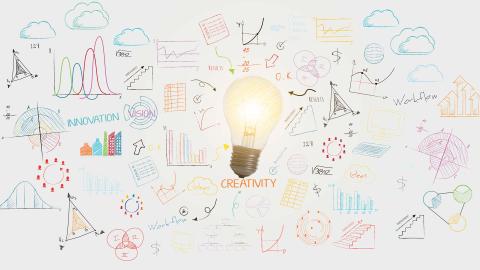| |
  |
|
June 13, 2018
Are We Getting Utility Bill Designs All Wrong?
Through E Source’s recent residential ethnographic research for E Design 2020, we identified discrepancies between the bills utilities send to their customers and the information customers want. Most bill redesigns focus on making it clear how much customers owe, reformatting for readability, adding elements of interest such as recent bill amounts and comparisons, and describing line items on the bill. But that’s not always enough.
|
Did you miss our web conference about bill redesign?
Download the presentation and watch the recording to learn about what customers want from their utility bill and how we can work together to redesign your bill using design thinking, E Source ethnographic research, and more.
|
|
|
Given that the utility bill is often the only regular communication between customers and their utility, what kind of influence does bill design have on the customer-utility relationship? We identified three areas of improvement:
- Explain the value behind the bill
- Help customers prepare for their bills
- Give customers a choice
Explain the value behind the bill
Customers don’t know what a kilowatt-hour or therm is, and most people don’t care to understand these terms. One woman told us, “Just tell me what I bought, like how much it cost me to charge my cell phone or have my AC on.”
People understand dollars, so how might we explain the value they receive each month in energy services for the money they pay? Shifting to a values-based bill design can benefit both customers and the utility, potentially reducing bill complaints. With the availability of smart meters, it’s easier than ever to provide this type of information to your customers.
Help customers prepare for their bills
Customers who have to budget for their bills, including low-income customers, feel they’re in the dark about how big their bill is going to be. Some customers want to have an alert estimating the amount of their bill well in advance. Others wish they could pay more often than every month, even weekly or daily.
|
 |
|
For these customers, it’s more valuable to have a prediction of next month’s bill than data on previous bills, which is a standard feature to show energy use over time. How might we change the bill design to combat the anxiety customers have about opening and paying their bill?
Give customers a choice
Customers don’t like that they’re “forced” to buy from a monopoly and have no choice in what they pay—participants were generally unaware of rate and billing options offered by their utility. Ultimately, it’s the utility’s and regulators’ job to help customers control and manage their bills. But before jumping into time-of-use rates, as some utilities are doing, consider the customer.
How might we design a set of rate and payment options that customers can readily understand and choose based upon their lifestyle? Choice architecture is an art and a science; providing real options for customers will empower them to feel more in control even when they’re buying from a monopoly.
Design thinking can help you reinvent a better customer bill
Our research reveals that even the newest redesigned bills are falling short of customer expectations, but by using ethnographic research and design thinking, we can reimagine the future of energy bills.
To learn more about our design-thinking approach, check out the recording of our recent web conference Radically Redesign Your Utility’s Customer Bill Using Design Thinking. We revealed findings from our ethnographic research with real utility customers and described the design-thinking project that we’re proposing.
|
|
About the author
|
BILL LEBLANC
Chief Instigation Agent
Bill LeBlanc previously served the business as vice president for marketing, vice president for consulting, and vice president for research. He’s also president of the Boulder Energy Group. Bill has more than 20 years of experience in strategic and social marketing, new product development, pricing, market research, and demand-side management. He focuses on helping utilities understand the intersection between the customer and the utility’s products and services, and specializes in maximizing marketing effectiveness. Before joining E Source, Bill worked for 6 years as a director at Barakat & Chamberlin, a national consulting firm. He also founded and served for several years as president of the Association of Energy Services Professionals. Bill served as a project manager at EPRI from 1988 to 1991, overseeing projects focused on demand management, rates, marketing, and customer behavior; developing promotional programs for EPRI products and services; and conducting conferences and workshops. He holds a BS and an MS in mechanical engineering from Stanford University and a BA in management economics from Claremont McKenna College.
|
 |
|
|
|
 Talk back! Let us know what you think. If you want to weigh in or chat about this topic, just email Kym Wootton, E Source vice president of Marketing. Follow Kym on Twitter.
|
|
|

